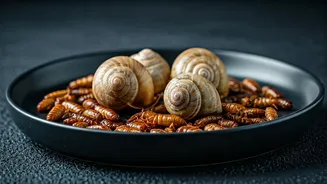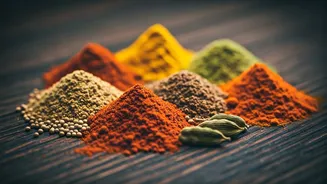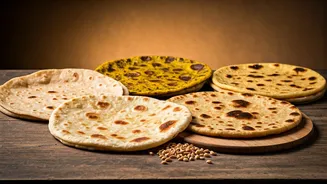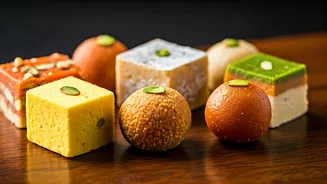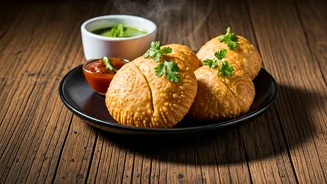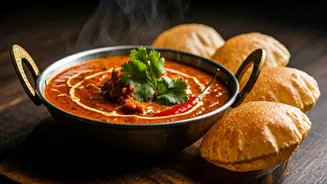Uncommon Culinary Heritage
Tamil Nadu's rich culinary tradition has long embraced ingredients that might seem unusual to some. The use of snails and winged termites, for instance,
isn't new; they've been part of the region's diverse food culture for generations. These ingredients reflect a deep connection to the land and a willingness to explore various food sources. This approach to cooking is rooted in the availability of ingredients, the local environment, and the resourcefulness of the Tamil people. This heritage showcases a resilient food system that has survived and thrived across many generations, which also indicates the significance of its cultural value. These unusual foods are incorporated into a variety of dishes and are often prepared with specific spices and cooking techniques that enhance their flavors, as well as nutritional value.
Snails: A Traditional Dish
Snails have held a place in Tamil cuisine for many years, offering a protein-rich food source often gathered from local environments. Prepared in different ways, the snails were usually cooked in flavorful gravies. This method of preparation would have involved a careful process to get rid of any impurities, ensuring they were thoroughly cleaned before cooking. After the snails were cleaned and prepped, they were cooked with an array of spices, herbs, and vegetables. Each regional variation of this dish showcases the creativity and adaptability of Tamil cooks, who were able to utilize local ingredients. The snails are frequently combined with ingredients such as tomatoes, onions, garlic, and chilies to give the dish its characteristic taste. This dish is usually eaten with rice or roti, and is an example of the ingenuity and variety found in Tamil cuisine, showing the rich history of the Tamil culinary landscape.
Termites: A Nutrient Source
Winged termites represent another unique element within the Tamil food history. Termites are a seasonal delicacy and are gathered during periods when they swarm. They were, and still can be, a good source of nutrition. Because termites are high in protein and healthy fats, these insects have been a valuable supplement to diets. Termites are commonly roasted, fried, or used in stews and sauces. Like snails, termites are often paired with a mixture of spices and herbs that are typical of Tamil cooking. The incorporation of winged termites exemplifies the Tamil people's deep understanding of their local ecosystem and their ability to utilize available resources. Their use highlights a sustainable approach to food that has been passed down through many generations.
Insect Protein: A Future?
The rising interest in insect protein in India suggests a possible evolution in eating habits. Insect protein provides a more sustainable and environmentally friendly food choice compared to some conventional sources. Given the need for sustainable food practices, many people are looking at insects as a viable option to supplement traditional proteins. The insect protein is also often linked to a lower environmental impact, since insects require fewer resources, such as water and land, than livestock. This switch may also help reduce reliance on standard crops needed to feed livestock. Insect protein is recognized as a way to enhance nutritional diets. This approach could play an important role in changing the face of food security in the future, especially given rising environmental concerns.
Adapting to Changing Tastes
The shift in attitudes towards food indicates India's developing palate, ready to accept innovative ingredients. The shift has been made with a growing awareness of sustainability and a curiosity about diverse culinary traditions. The acceptance of insect protein is a component of a larger trend toward healthy eating and sustainable sourcing. This change is being driven by the younger generation, along with their curiosity to try new things and a concern for the environment. These adjustments reflect a larger movement toward a more diverse and adaptable food culture in India. This flexibility enables the embrace of novel, sustainable food sources, whilst also supporting the evolution of culinary traditions.
